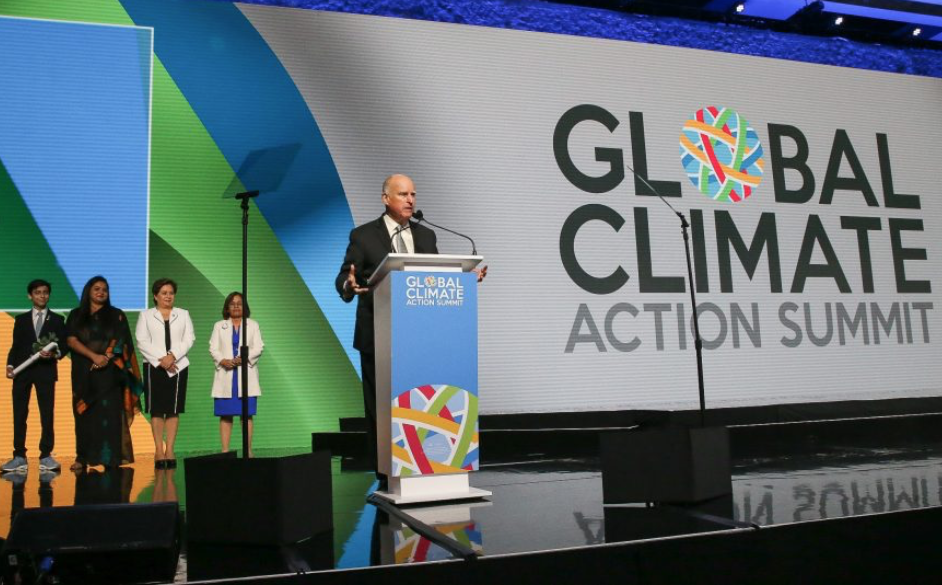CommentsTRANSIT TALK-The Global Climate Action Summit was held September 12-14, 2018, in San Francisco. The summit was led by its Co-Chair, California Governor Jerry Brown. From the summit’s website:
States and regions, cities, businesses and investors are leading the charge on pushing down global emissions by 2020, setting the stage to reach net zero emissions by midcentury.
In October 2018, just after the summit, the United Nations issued a report (The report), by the Intergovernmental Panel on Climate Change, a group of scientists convened by the United Nations to guide world leaders, describes a world of worsening food shortages and wildfires, and a mass die-off of coral reefs as soon as 2040 — a time well within the lifetime of much of the global population.
Vehicle exhaust is contributing a greater share of global emissions. This is from the lifestyle of driving everywhere, all the time. The United States sets examples for the world, and two the newest largest economies, China and India, are following us and using internal combustion (ICE) engines for their vehicles, creating smog at very unhealthy levels. Smog is the seen and felt aspects of carbon gases from vehicles and is a major contributor to the rise in the earth’s temperature.
There are always the overly optimistic boosters who think plug in vehicles will soon replace the millions of ICE vehicles on the road, and things will be fine.
Things may not be fine.
Skeptics argue that the shift from ICE vehicles to electric ones are mostly marginal. Exxon Mobil, which is studying the threat that electric cars could pose to its business model, still expects that plug-in vehicle sales will grow slowly, to just 10 percent of new sales in the United States by 2040, with little impact on global oil use. The federal Energy Information Administration projects a similarly sluggish uptick.
Meanwhile, the United Nations report stated that absent aggressive action, many effects once expected only several decades in the future will arrive by 2040. “It’s telling us we need to reverse emissions trends and turn the world economy on a dime,” said Myles Allen, an Oxford University climate scientist and an author of the report.
From my studying of news accounts of the California Global Climate Action Summit, many issues were raised, business models proposed, and a general sense of accomplishment was felt. There was an electric bus. Governor Brown signed documents on an electric powered boat which supposedly showed that the summit is “with-it,” making strides in reducing carbon gases.
How practical is an electric boat in California for transit, particularly in drought suffering desert Southern California? Not very. And electric buses are still going through extensive testing.
However, now on the streets – as well as above and underneath -- are buses and trains, moving people in far more efficient, less carbon emission producing ways than the millions of ICE cars in California.
Where were the buses and trains at the summit? The newest model buses could have been driven directly to the summit for the attendees to review and ride in. As a current bus rider, I know that buses have made great strides in passenger comfort and safety since the days I started riding buses in 1993.
There should have been field trips to the subway and trains now in use in the Bay Area. This would have shown the summit attendees the value of mass transit, and could have shown the world a practical, real world mode of low emission transportation. An electric boat does not do that, and indeed, using it could be a definition of show-boating.
Perhaps buses and trains were not at the summit because the concept of everyday use of buses and trains by the summit’s organizers is a foreign concept, and therefore not applicable to the rest of the people.
A great example could have been set, should have been set, for the rest of the world, but it was not. Time is of the essence in reducing carbon gases from transportation, which mean taking steps today to leave the car/SUV/truck parked, and ride buses, trains, and go back to that ancient, intuitive mode of transportation: walking.
(Matthew Hetz is a Los Angeles native. He is a transit rider and advocate, a composer, music instructor, and member and president and executive director of the Culver City Symphony Orchestra.) Edited for CityWatch by Linda Abrams.















